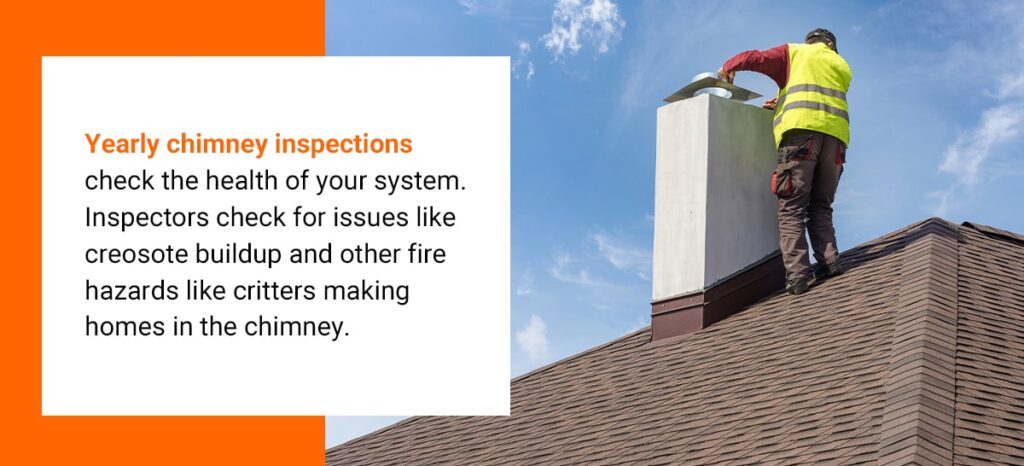Your fireplace or wood-burning stove keeps your home cozy while adding a beautiful ambiance to your space. Keep it in good condition with regular cleaning and inspections. These services increase your home safety, giving you peace of mind while you relax by the fire.
When to Clean Your Chimney
Get chimney cleanings about once yearly, especially for a fireplace you use regularly. Those who rarely use their fireplace may wait longer between cleanings but should still get regular chimney inspections.
The National Fire Protection Association recommends yearly chimney inspections to check for safety issues. This guidance applies to any home with a chimney, even those that rarely use the woodstove or fireplace. Smoky fires without enough oxygen produce unburned tar vapors called creosote. This oily substance builds up inside the chimney and may cause fires. Other safety hazards include critters or debris.
The Importance of a Clean Chimney
A clean chimney makes a significant difference in your home, giving you a reliable heating source to warm the winter chill. Benefits of a clean chimney and regular cleanings include:
- Safety: Cleaners remove twigs, debris and creosote that build up in the structure, which ensures heat, smoke and carbon monoxide can escape.
- Efficiency: A clean chimney makes burning more efficient by removing clogs that could block oxygen from getting in. A cleaner chimney results in a warmer home.
- Longevity: Buildup like creosote can cause corrosion in metal and mortar. Regular cleanings keep these harmful substances from building up.
- Visibility: When your chimney is clean, its internal surfaces, like the damper and smoke shelf, are more visible. Inspectors can spot issues like decay or cracks more easily.
- Comfort: Sometimes, buildup causes unpleasant odors, especially when you use your fireplace in damp weather. You’ll experience better home comfort with regular cleanings.

The Importance of Chimney Inspections
Yearly chimney inspections check the health of your system. Inspectors check for issues like creosote buildup and other fire hazards like critters making homes in the chimney. Based on their inspection, experts recommend further services like repairs or cleaning. Schedule inspections in late summer or early fall before your peak fireplace use to catch issues.
After your inspection, professionals determine whether you need a cleaning or other service. Typically, inspectors recommend cleanings when soot or creosote buildup reaches 1/8 inch. Any buildup beyond this amount increases the chances of a chimney fire, which could spread to your roof or other areas inside your home. The buildup or fire might also cause damage to your chimney, leading to repairs.
Here are other reasons you might schedule an inspection:
- Your chimney is experiencing performance issues.
- You just bought a home with a chimney system.
- You have recently updated or changed your heating systems.
- Your fireplace and chimney haven’t been used for a long time.
Get an Inspection From Atlanta Chimney Doctor
A professional inspection is an excellent way to determine whether your chimney needs cleaning. Our team at Atlanta Chimney Doctor has over 30 years of industry experience, giving you trusted expertise for your home. Contact us to request service.
